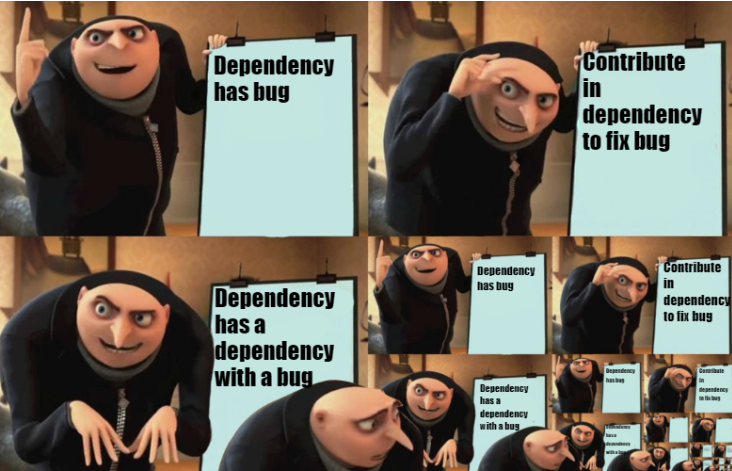Side Step
The beauty of the open-source community is evident in its "I see, therefore I fix" attitude. This is often the best way to get started, and to keep going; whilst developing your own projects, you will inevitably come across bugs in the tools you use. Why not fix them?
The Bug
Let's say you are working on a project, and you come across a bug 🐛 in a tool you use. You can either:
- Ad-hoc fix the bug in just your own code
- Use a different tool
- Fork the tool, fix the bug, and use your fork
- Contribute to the tool
At the very least, it is worth checking the tool's issue tracker to see if the bug has already been reported. If it has, you can add a comment to the issue, or even better, you can submit a pull request to fix the bug.
Example Time
You are writing a certain book-like thing using mdBook bootstrapped with mdbook-admonish.
Writing an admonish block has the following options:
```admonish note
Default with title="Note"
```
```admonish note title="Another Title"
Default with title="Another Title"
```
```admonish note title=""
No title is shown, and the cute little icon is not shown
```
🤔But you want no title, and you want the cute little icon to be shown. How do you do that?
A little bit of hacking, and you discover title=" " does not work, but title="​" does. That is odd. A 🐛??
The Report
After searching the issue tracker, you find that the bug has not been reported. So, you open an issue.
The issue contains as much information as is relevant, and is polite and respectful. Including a code example or two goes a long way.
The Fix
A maintainer of the project gets back with some actionable steps to close the issue. You decide to fix the bug, and submit a pull request.
First, you should probably read any contributing guidelines the project has. Usually, these are located in a CONTRIBUTING.md file in the root of the repository, or mentioned in the README.md.
Then, you go through the whole Git Started process again.

Overview
Contributing a fix to the software you use may not always be possible due to the scope of the bug, or the aliveness of the project. However, it is worth trying, and is an excellent way to develop your developer skills.